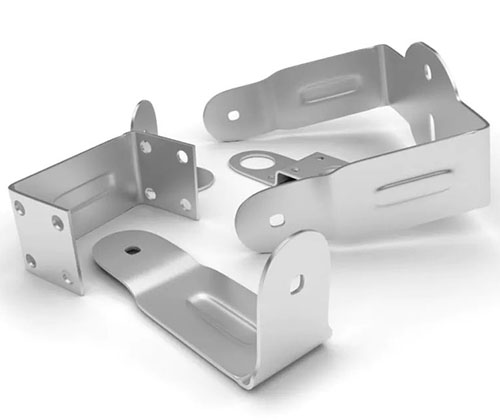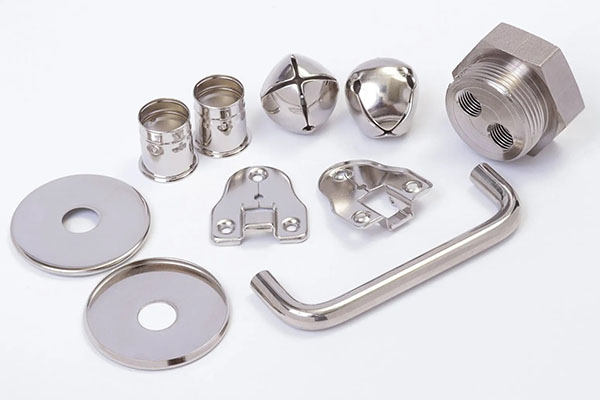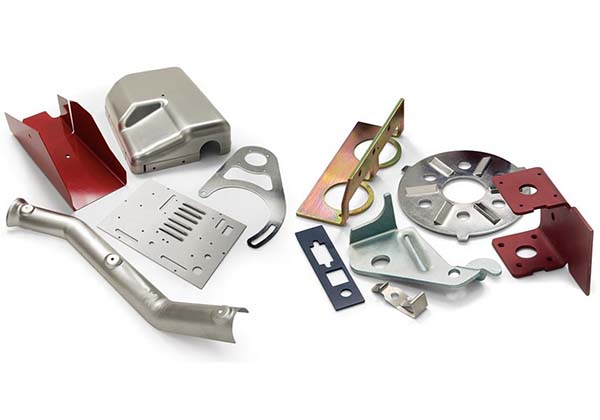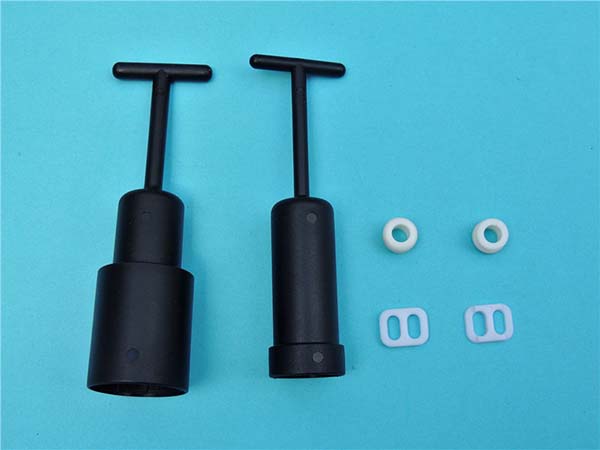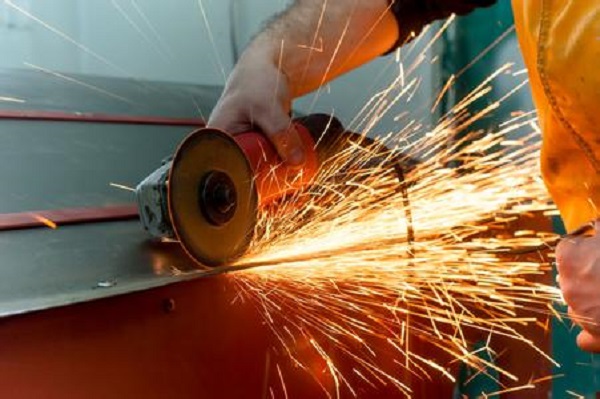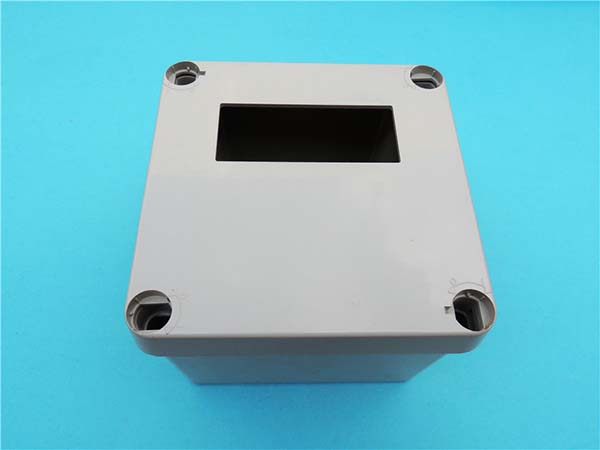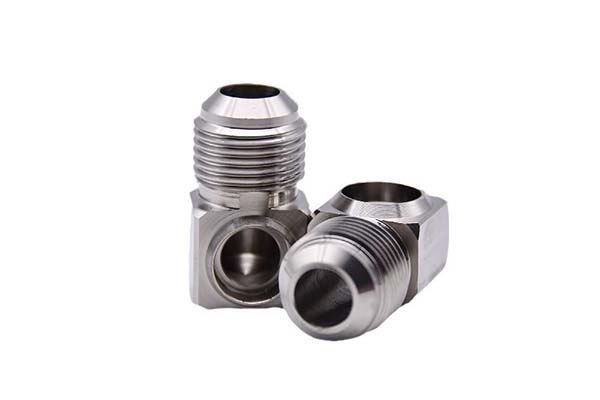Introduction
Understanding Aluminum Rapid Prototyping
In the dynamic realm of modern manufacturing, aluminum rapid prototyping has emerged as a game - changing technology. But what exactly is aluminum rapid prototyping?
Aluminum rapid prototyping refers to the fast - paced creation of prototypes using aluminum materials. It combines advanced manufacturing techniques such as 3D printing, CNC machining, and rapid tooling to quickly transform a digital design into a physical aluminum model. This process is not only about speed but also about precision, as it allows for the production of highly accurate parts with complex geometries.
The importance of aluminum rapid prototyping in modern manufacturing cannot be overstated. Firstly, it significantly reduces the product development cycle. In the past, creating a prototype could take weeks or even months, involving multiple steps of traditional manufacturing processes. With aluminum rapid prototyping, companies can have a functional prototype in hand within days or even hours in some cases. This acceleration enables businesses to quickly test their ideas, make design improvements, and get their products to market faster, gaining a competitive edge.
Secondly, it offers cost - effectiveness, especially in the early stages of product development. Since it eliminates the need for expensive tooling and long - lead - time manufacturing processes for initial prototypes, companies can save a substantial amount of money. They can experiment with different designs and concepts without incurring high costs, which is crucial for startups and small - to - medium - sized enterprises with limited budgets.
Moreover, aluminum, as a material, has unique properties that make it ideal for rapid prototyping. It is lightweight yet strong, with excellent corrosion resistance and thermal conductivity. These properties mean that the prototypes created are not only easy to handle but also suitable for a wide range of applications, from aerospace and automotive industries to consumer electronics and medical devices. For example, in the aerospace industry, where weight reduction is crucial for fuel efficiency, aluminum prototypes can be used to test new component designs without sacrificing strength.
In the following sections, we will delve deeper into the different techniques of aluminum rapid prototyping, their applications, and the factors to consider when choosing this method for your project.
The Process of Aluminum Rapid Prototyping
Step - by - Step Breakdown
- 3D Modeling: The first crucial step in aluminum rapid prototyping is 3D modeling. Designers use advanced CAD (Computer - Aided Design) software such as SolidWorks, AutoCAD, or CATIA to create a detailed three - dimensional digital model of the part or product. This model serves as the blueprint for the entire prototyping process. For example, if you are creating a prototype of an aluminum engine component, the 3D model will accurately represent all the intricate details, including holes, grooves, and complex curvatures.
- Data Processing: Once the 3D model is ready, it needs to be processed into a format that the prototyping machine can understand. This usually involves converting the CAD file into an STL (Stereolithography) file. The STL file breaks down the 3D model into a series of small triangular facets, which are used to define the shape of the object. After converting to STL, the file may be further processed using slicing software. The slicing software divides the 3D model into thin horizontal layers, typically ranging from 0.05 to 0.3 mm in thickness, depending on the desired level of detail and the capabilities of the prototyping equipment. Each layer contains information about the cross - sectional shape of the part at that particular height.
- Material Preparation: High - quality aluminum powder or wire is required, depending on the chosen prototyping technology. For powder - based processes like Selective Laser Sintering (SLS), the aluminum powder should have a uniform particle size distribution. The powder is typically stored in a dry environment to prevent oxidation and moisture absorption, as these can affect the quality of the final prototype. For wire - based processes such as Fused Deposition Modeling (FDM) with aluminum - filled filaments, the filaments need to be free of any kinks or defects that could cause extrusion problems during the printing process.
- Prototyping: This is the stage where the physical prototype is actually created. The prototyping machine reads the processed data and starts building the part layer by layer. For example, in an SLS machine, a high - power laser selectively sinters the aluminum powder layer by layer according to the cross - sectional data of each layer. In an FDM machine with an aluminum - filled filament, the filament is melted and extruded through a nozzle to deposit material in the desired shape for each layer.
- Post - Processing: After the prototyping is complete, the part usually requires post - processing. This can include removing any support structures that were used during the printing process, sandblasting to improve the surface finish, and heat - treating to enhance the mechanical properties of the aluminum. Heat - treatment processes such as annealing or tempering can significantly improve the strength, hardness, and ductility of the prototype.
Technologies Involved
- Selective Laser Sintering (SLS):
- How it works: SLS uses a high - power laser to sinter aluminum powder particles together. The laser scans the surface of a powder bed, melting and fusing the powder in the areas corresponding to the cross - section of the 3D model. As each layer is completed, the powder bed is lowered, a new layer of powder is spread, and the process repeats until the entire part is built.
- Advantages:
- It can create complex geometries with internal features and undercuts without the need for additional support structures, as the unsintered powder provides support during the process.
- Offers high material utilization, as any unsintered powder can be reused.
- Suitable for producing small - batch, customized parts efficiently.
- Disadvantages:
- The surface finish of the printed parts may be rough, often requiring significant post - processing.
- The process can be relatively slow, especially for large parts.
- Equipment and material costs are relatively high.
- Fused Deposition Modeling (FDM) with Aluminum - filled Filaments:
- How it works: FDM extrudes a molten aluminum - filled filament through a heated nozzle. The nozzle moves in a predefined path based on the sliced 3D model data, depositing the material layer by layer to build the part. The material cools and solidifies immediately after extrusion, bonding to the previous layer.
- Advantages:
- FDM printers are relatively more affordable compared to SLS machines, making it accessible for small businesses and hobbyists.
- The process is relatively simple to operate, with a lower learning curve.
- Allows for quick iteration of designs as the setup and change - over times are short.
- Disadvantages:
- The strength of the printed parts may be lower compared to parts made by SLS, especially in the Z - axis direction, due to the layer - by - layer nature of the process.
- Limited to relatively simple geometries as complex overhangs may require extensive support structures, which are difficult to remove in some cases.
- The maximum size of the parts is restricted by the build volume of the printer.
| Technology | Complexity of Geometry | Surface Finish | Strength | Cost | Speed |
| SLS | High (can create complex internal features) | Rough (needs post - processing) | High | High (equipment and materials) | Slow |
| FDM with Aluminum - filled Filaments | Moderate (limited by support requirements) | Moderate (layer lines visible) | Moderate (lower in Z - axis) | Low (equipment) | Fast |
Applications of Aluminum Rapid Prototyping
Aerospace Industry
In the aerospace industry, aluminum rapid prototyping plays a pivotal role. For aircraft, components such as wing spars, engine brackets, and landing gear parts are often prototyped using aluminum rapid prototyping techniques. For example, a leading aircraft manufacturer used selective laser sintering (SLS) to create a prototype of a new - design wing spar. The complex internal structure of the wing spar, which was designed to optimize strength - to - weight ratio, was accurately reproduced through SLS. This allowed the engineers to test the aerodynamic performance and structural integrity of the component in a short time.
In the case of satellites, aluminum rapid prototyping is used to produce structural components like satellite frames and antenna mounts. These prototypes help in validating the design in terms of vibration resistance, thermal stability, and space - environment compatibility before mass - production. The ability to quickly iterate designs through aluminum rapid prototyping has significantly reduced the development time of aerospace products, making space exploration more efficient and cost - effective.
Automotive Industry
The automotive industry also benefits greatly from aluminum rapid prototyping. When developing a new car model, manufacturers often use aluminum rapid prototyping to create engine cylinder blocks for early - stage testing. Aluminum's excellent heat - dissipation properties make it an ideal material for engine components. By quickly prototyping engine cylinder blocks, engineers can test different cooling channel designs and combustion chamber shapes to improve engine efficiency.
For automotive wheels, aluminum rapid prototyping allows for the creation of lightweight and high - strength wheel prototypes. These prototypes can be tested for durability, load - bearing capacity, and aerodynamic performance. For instance, a luxury car brand used aluminum - filled filament in FDM to create a prototype of a new - design alloy wheel. The lightweight design of the wheel, achieved through rapid prototyping, not only improved fuel efficiency but also enhanced the vehicle's handling and braking performance. This has led to better - performing and more fuel - efficient cars, meeting the growing demands of consumers for both performance and environmental friendliness.
Electronics Industry
In the electronics industry, aluminum rapid prototyping meets the diverse requirements of product design. For example, the casings of smartphones and tablets are often made from aluminum due to its lightweight and aesthetically pleasing properties. With rapid prototyping, electronics manufacturers can quickly create prototypes of different casing designs, testing for factors such as ergonomics, heat dissipation, and electromagnetic shielding.
Aluminum is also widely used in the production of heat sinks for electronic devices. Heat sinks need to have complex fin structures to maximize heat dissipation. Aluminum rapid prototyping techniques, such as SLS, can accurately produce heat sink prototypes with intricate fin designs. These prototypes can be tested for their thermal performance, ensuring that they can effectively dissipate heat from high - power electronic components like CPUs and GPUs. This helps in the development of smaller, more powerful, and more reliable electronic devices, keeping up with the fast - paced innovation in the electronics market.
Yigu Technology's Perspective
As a non - standard plastic and metal products custom supplier, Yigu Technology deeply understands the value of aluminum rapid prototyping. We believe that this technology unlocks a world of possibilities for product innovation. By optimizing the manufacturing process and choosing the most suitable rapid prototyping technology, we can meet the diverse needs of our customers.
For example, when dealing with complex - shaped aluminum parts for aerospace applications, we might choose SLS technology to ensure high - precision and complex internal structures are achieved. For small - scale, cost - conscious projects in the electronics industry, FDM with aluminum - filled filaments could be a more viable option. Yigu Technology is committed to leveraging aluminum rapid prototyping to help our clients reduce development time, cut costs, and bring their innovative ideas to life more efficiently.
FAQs
What is the typical turnaround time for aluminum rapid prototyping?
The turnaround time for aluminum rapid prototyping can vary significantly depending on several factors. For relatively simple models with basic geometries, using common 3D printing or CNC machining techniques, the production time might be as short as 1 - 3 days. This is often the case when the design has few complex features and the parts are small - sized. However, for more complex models with intricate internal structures or large - scale projects, it could take anywhere from 5 - 10 days. For example, if a prototype requires the use of selective laser sintering (SLS) to create complex internal channels for a heat - exchanger design, the longer processing time for SLS, along with potential post - processing steps, will increase the overall turnaround time. Additionally, the order quantity also plays a role. Larger orders will naturally take more time to complete compared to single - piece prototypes.
Can aluminum rapid prototyping be used for large - scale production?
Aluminum rapid prototyping is not typically the most cost - effective or efficient method for large - scale production. While it offers great advantages for small - batch and customized production, such as quick design iteration and the ability to produce complex parts without high - cost tooling, large - scale production requires high - volume manufacturing techniques. For large - scale production, traditional manufacturing methods like injection molding or die - casting often become more suitable. These methods can achieve higher production rates and lower per - unit costs due to economies of scale. However, aluminum rapid prototyping can be used as a valuable step in the product development cycle for large - scale production. It allows companies to test and validate product designs, make necessary improvements, and then transition to more production - friendly manufacturing processes. For example, a company developing a new aluminum automotive part might first use rapid prototyping to test different design concepts and then move to die - casting for large - scale production once the design is finalized.
How accurate are the parts produced through aluminum rapid prototyping?
The accuracy of parts produced through aluminum rapid prototyping depends on multiple factors, including the equipment used, the prototyping technology, and the post - processing methods. In general, with modern 3D printing and CNC machining equipment, the dimensional accuracy of aluminum prototypes can reach within ±0.1 - 0.5 mm for most common applications. For high - precision CNC machining, the accuracy can be even higher, up to ±0.01 - 0.05 mm. In selective laser sintering (SLS), the accuracy is often around ±0.1 - 0.3 mm, but it can be affected by factors like powder distribution and laser power consistency. After post - processing, such as precision machining, the accuracy can be further improved. For instance, a part produced by SLS might have a surface roughness and dimensional error that can be refined through subsequent CNC milling to achieve a more accurate final product.
